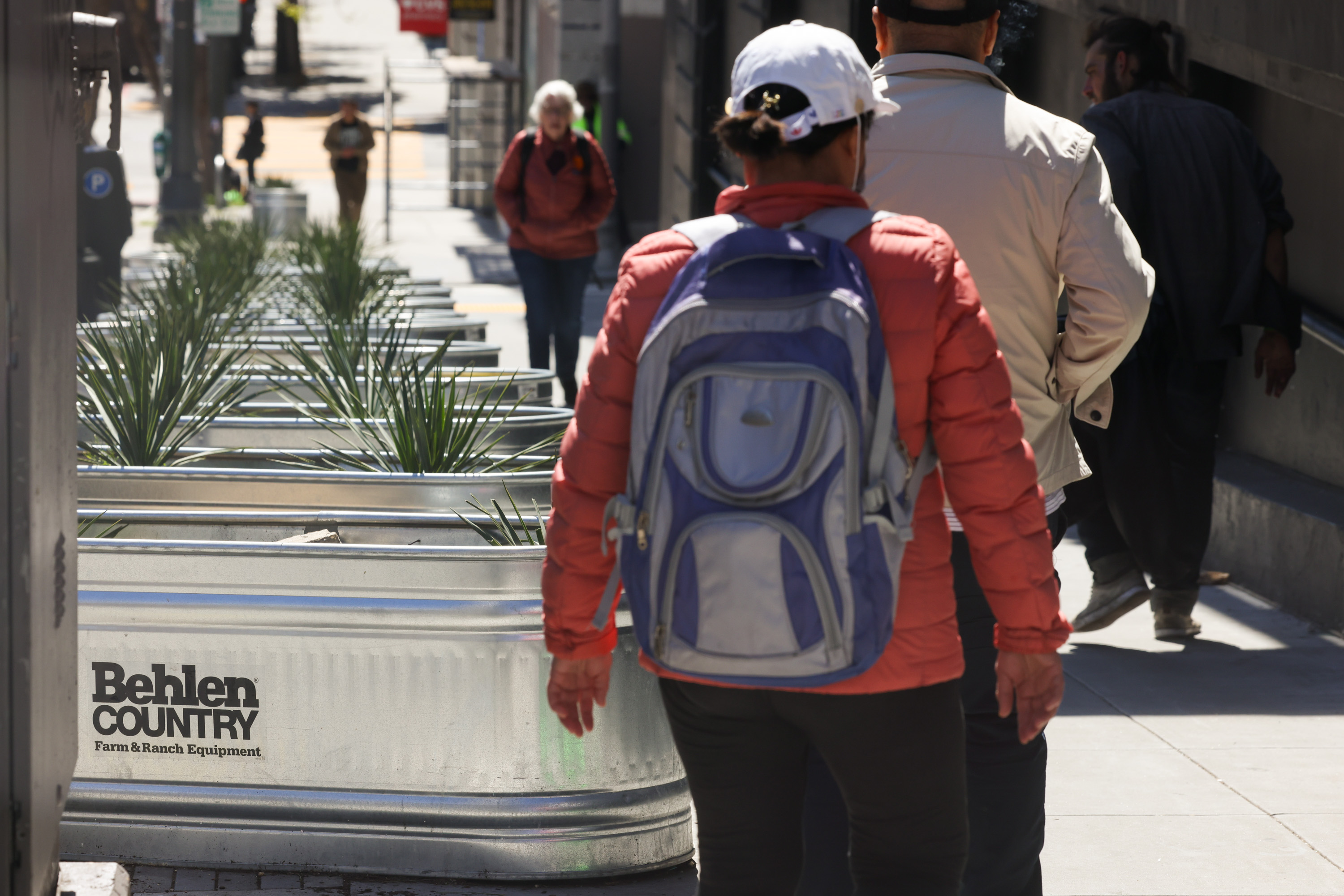Some San Francisco residents are concerned the city is making it more difficult to install planters on sidewalks as homeless advocates push back on their use.
The planters, dubbed “hostile architecture” by homeless advocates, have popped up across city streets in an apparent attempt to curb encampments and drug use outside homes and businesses.
The Department of Public Works will soon require planter owners to obtain permits before their installations. The new permit, which is being finalized and will come into effect in the coming months, will require owners to have live plants in the metal troughs and provide at least 72 inches of unobstructed sidewalk space for pedestrians to pass.
The “Love Our Neighborhoods” permit also allows individuals to “beautify” their sidewalks with installations such as “little libraries” and benches. Community organizations will be allowed to apply for sculptures, murals, and other larger projects.
The department said the process will make it “easier, quicker, and less expensive for communities to beautify and green their neighborhoods.”
However, some residents disagree, arguing the additional process places more burden on locals who have been plagued by homelessness, drug activity and crime.
The new permit is a change of tack for the city, which previously had a laissez-faire attitude toward planters and, on at least one occasion, helped residents install them, emails obtained from public records requests show.
One resident of Larch Street, who spoke anonymously out of fear of retribution from homeless advocates, said the planters on his Tenderloin street have positively transformed his life.
The resident explained that he was previously unable to sleep due to constant noise from the alley below his building before the planters were installed, causing the late-night activity to move elsewhere.
Larch Street’s planters covered the majority of the sidewalk when The Standard visited. Public Works recently began citing owners for blocking sidewalks with planters, warning that if they’re not moved within 30 days, owners will have to pay for the moving costs.
“Now I’m able to sleep through the night because I’m not listening to the screaming of suffering,” the resident said. “We need a solution that addresses not the planters, but the underlying problem of the people who are homeless and the people that are buying and selling drugs.”
Supervisor Myrna Melgar, who drafted the new permit rules, argued the program would only make the process more difficult for residents who are installing planters illegally.
There was already a permit for installing planters, but Melgar said the process was clunky and expensive, so it was rarely used. The new planter permit is free, but anyone with an existing planter will need to get a permit.
“It’s only adding steps if you’re doing it illegally,” Melgar said. “Of course, it’s not as easy as doing whatever you want without asking permission. But it has to be that way.”
In a statement, Public Works spokesperson Rachel Gordon said fake plants will not be allowed.
“Planters should be kept graffiti- and litter-free, allow for ADA accessible passage, and contain plants or flowers that actually beautify or add something to the neighborhood,” Gordon said.
But the Larch Street resident argued that it’s difficult to keep the planters stocked with live greenery because they’re often vandalized by drug users.
“They dig through the planters with some sort of fantasy hope of finding drugs buried,” he said. “My fervent wish is that the city simply stays out of it and not do anything that will impact a successful and creative solution.”
As city officials considered the legislation, some members of the public objected that the program would give Public Works too much power over who gets to install planters.
Activist Hazel Williams, who has been an ardent critic of the planters, argued the program may legalize anti-homeless architecture.
“If the permitting system legalizes anti-homeless architecture and doesn’t include a way to ensure it’s not being abused to displace people … then it’s not a very accurate name,” Williams said. “Displacing people is not love, it’s hate.”
